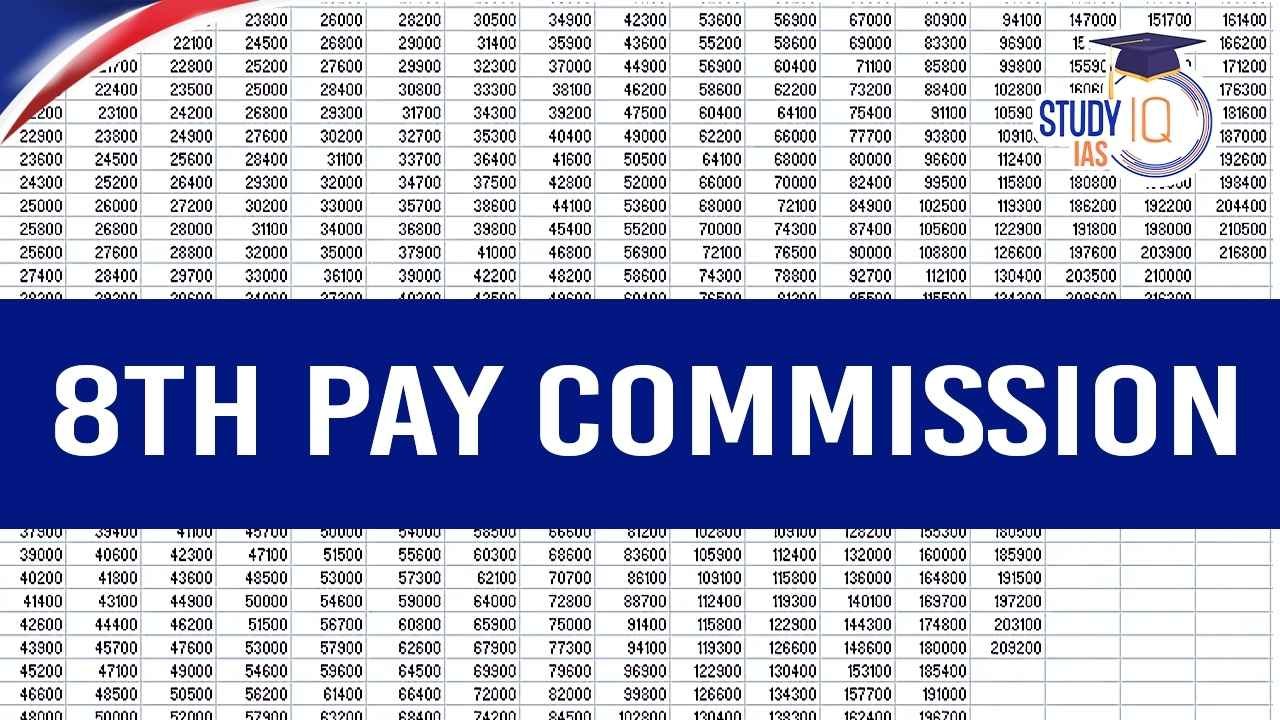The 8th Pay Commission is creating a lot of excitement among government employees in India. Set to roll out in 2025, it promises a significant salary hike and better benefits for millions of workers. This commission, which reviews and updates the pay structure every few years, aims to improve the financial condition of employees while keeping up with rising costs. Let’s dive into the key details of this much-awaited update, including the pay matrix and what it means for employees.
What is the 8th Pay Commission?
The 8th Pay Commission is a government-formed body that decides how much central government employees, like teachers, railway staff, and defense personnel, should be paid. It looks at the cost of living, inflation, and other factors to suggest fair salary increases. The last commission, the 7th Pay Commission, was implemented in 2016, and since then, employees have been eagerly waiting for the next update. This new commission is expected to bring a salary hike of 20-25%, which will help workers manage their expenses better.
Key Features of the Salary Hike
The 8th Pay Commission will introduce several changes to make life easier for employees. Here are the main highlights:
- Salary increase of 20-25% for all central government employees.
- Higher dearness allowance (DA) to adjust for inflation.
- Improved house rent allowance (HRA) based on city categories.
- Better pension benefits for retired employees.
- New pay matrix to simplify salary calculations.
These changes aim to ensure employees can live comfortably while supporting economic growth. The commission is also focusing on reducing the gap between lower and higher-grade employees to promote fairness.
Understanding the Pay Matrix
The pay matrix is a simple table that shows the salary structure for different employee levels. It helps workers understand their basic pay, grade pay, and total salary after allowances. The 8th Pay Commission is expected to revise this matrix to reflect the new salary hikes. Below is a sample pay matrix for reference:
| Pay Level | Basic Pay (INR) | Grade Pay (INR) | Total Salary (INR) |
|---|---|---|---|
| Level 1 | 18,000 | 1,800 | 25,000-30,000 |
| Level 5 | 29,200 | 2,800 | 40,000-50,000 |
| Level 10 | 56,100 | 5,400 | 75,000-90,000 |
This table is an example, and the final matrix may vary. Employees can expect their salaries to rise based on their pay level and years of service.
Impact on Employees and Economy
The salary hike will directly benefit over 50 lakh central government employees and pensioners. With more money in their pockets, workers can spend more, which will boost businesses and the economy. For example, people may buy more goods, like cars or appliances, helping industries grow. However, some experts worry that higher salaries could increase government spending, which might affect the budget. Still, the overall mood is positive, as employees feel valued for their hard work.
When Will It Be Implemented?
The 8th Pay Commission is expected to finalize its recommendations by mid-2025, with the new salaries likely to take effect from January 2026. The government is working to ensure a smooth rollout, so employees may start seeing changes in their paychecks soon after. Until then, discussions and planning will continue to make sure the commission meets everyone’s expectations.
This salary hike is a big step toward improving the lives of government employees. With a clear pay matrix and better benefits, the 8th Pay Commission is set to bring smiles to millions of faces across India.
